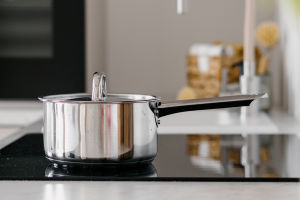Many individuals have experienced a scenario where they find themselves in the shower, intending to use shampoo for washing their hair, but they accidentally squeeze out shower gel instead.
Not wanting to waste it, people decide to proceed and use the shower gel on their hair.
Surprisingly, it appears to do the job, at least in terms of cleansing away the excess oil from their hair. This raises the question: What's the real difference between shampoo and shower gel, and can they be mixed?
If you use shampoo or shower gel primarily for basic cleansing purposes, aiming to remove oils and dirt, then mixing them can work because both products contain surfactants.
However, it's important to note that despite sharing a common cleansing principle, shampoo and shower gel offer slightly different cleansing effects.
Shampoo mainly employs anionic surfactants, which work by increasing the negative charge potential on dirt particles and hair surfaces. This principle leads to a better removal of dirt from your hair.
On the other hand, shower gel includes not only anionic surfactants but also amphoteric surfactants.
Amphoteric surfactants are resistant to hard water, which is water containing higher levels of calcium and magnesium ions. Even in such conditions, they can effectively cleanse.
Moreover, amphoteric surfactants have excellent emulsifying and foaming properties, generating more lather and ensuring oils and fats are evenly emulsified and washed away from the skin's surface. As a result, they are better suited for use on the body.
However, when it comes to hair, cleansing alone isn't sufficient. It's equally important to maintain hair smoothness. Each strand of hair has a microscopic surface covered in scales, stacked on top of each other.
During washing, if these scales get damaged or lifted, it increases friction between the hair strands, resulting in dry, frizzy, and dull-looking hair.
To combat this issue, many shampoos incorporate a substance called polydimethylsiloxane, commonly known as silicone oil. This silicone oil creates a protective film over damaged areas of the hair scales, leaving the hair sleeker and smoother.
While it's possible to mix shower gel and shampoo for basic cleansing purposes, it's not the most ideal solution.
It's also not advisable to mix different cleaning products, such as facial cleansers and soaps.
Facial cleansers often contain amino acid surfactants, which are mildly acidic like human skin. They offer gentle cleansing with low irritation and help protect the skin barrier. Therefore, if you're cleansing your face, it's recommended to use a specialized facial cleanser.
Soap, known for its excellent oil removal capabilities, tends to be alkaline when hydrolyzed. Using soap on your face can easily irritate your skin and disrupt the natural oil balance, leaving your skin overly dry and tight.
The best way to get the most out of various cleaning products is to let each product do its intended job, as they are formulated for specific purposes and excel when used accordingly. Mixing them may not provide the best results for your hair and skin.


